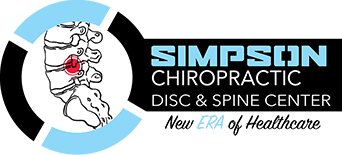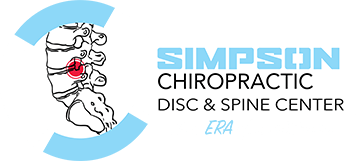BULGING & HERNIATED DISC
A bulging or herniated intervertebral disc (we will simply call them “discs” from here on out) can be a very painful condition. An injury to the disc can cause pain on its own, or it can cause nerve irritation or nerve compression that can occur at any level of the spine. When a nerve is affected, the pain and dysfunction can be much more intense. Most commonly, bulging or herniated discs occur in the low back (lumbar spine), but they may also occur in the neck or middle back. With a detailed history and examination, chiropractors can help you figure out whether or not your pain is related to a disc problem.
DISC ANATOMY
Discs themselves are not very complicated. They are the cartilage that sits between each of the vertebrae to absorb shock when we move. There are two main parts to the disc—the outer layers are tough and surround an inner jelly-like center. An easy way to think about this is to picture a big slice of onion with the inner layers removed and filled with gel toothpaste.
Causes, Diagnoses & Treatment Options
CAUSES

Even though those outer layers are tough, they can be weakened by age, general wear, and tear, a sedentary lifestyle, and/or obesity. Weakened discs are more easily damaged by repetitive motion, force, and the act of lifting heavyweight and then shifting that weight. When the outer layers of the disc are weak, the pressure from the jelly-like center pushes on the weak layers and changes the shape of the disc. We call that change to the shape of a disc a bulge or prolapse. The outer layers of the disc can also tear, and if that jelly-like center starts to ooze between the torn layers, that is a disc herniation.
In both a disc bulge and a disc herniation, the changed shape of the disc can put pressure on the nearby nerves and/or spinal cord, and that pressure often causes pain. The location of the disc bulge or herniation may cause pain in other areas. For example, a bulging or herniated disc in the low back (lumbar spine) may cause radiating pain, numbness or tingling, or muscle weakness in one or both legs and/or feet. A disc problem in the neck (cervical spine) may cause similar symptoms in the arms or hands.
DIAGNOSIS
To diagnose a disc problem, chiropractors perform neurologic and orthopedic tests during your initial examination. These tests help figure out whether you have a disc problem, and which nerves may be affected by a disc bulge or herniation. Depending on the findings of your physical examination and the severity of your symptoms, an MRI (Magnetic Resonance Imaging) or x-rays may be requested. Chiropractors sometimes look at the spacing between the vertebrae on an x-ray to get an idea of the disc height and spine health in general, but an MRI is the best way to get detailed information about soft tissues, such as discs. It is possible that a bulging or herniated disc is seen on an MRI but is not causing any discomfort, so sometimes the condition is discovered when a person has an MRI for some other reason.
TREATMENT OPTIONS
Similar to flexion-distraction therapy is mechanical traction, which is a gentle, longer-lasting pull on the affected area, again to create more space between the vertebrae for the disc. Mechanical traction is often done using a machine that is monitored by the chiropractor or assistant. Spinal manipulation may also be a treatment option for a disc problem, to restore the correct joint motion in the spine and encourage disc healing.
Some chiropractors use other therapies in the office, such as therapeutic ultrasound, cold laser treatment or interferential current (IFC) to take care of the muscles and nerves that may be affected by a bulging or herniated disc, along with other specific techniques that focus on healing bulging or herniated discs.
At-home care can be an important part of your treatment plan as well. You may be shown stretches and exercises to do at home between your visits.
There are many different options for treating a bulging or herniated disc. Chiropractors can help diagnose a disc problem and create a treatment plan with you to decrease your discomfort and improve the health of your spine.
-
“He is prompt, very knowledgeable, and kind. When explaining your reason for the visit, he quickly finds your problem and works it right out. I say Dr. Simpson is the best in our area!! ”
- Penny B. -
“Best chiropractor around! Staff are super friendly and overall inviting atmosphere. ”
- Heather S. -
“Great caring staff, easy to make appointments, and Dr. Simpson listens and takes care of any problem areas and concerns. ”
- Jayne H. -
“I have had nothing but a great experience at Simpson Chiropractic! I started as a new patient last fall and the staff is friendly, the service is awesome, and the difference I feel has been amazing. I would highly recommend them to anyone in need of chiropractic care! ”
- Karen T. -
“Everyone is friendly and knowledgeable and I feel so much better leaving after an adjustment! ”
- Traci M. -
“Dr. Simpson is wonderful, and so is his staff! The wait time is minimal, and I always leave feeling better than when I went in! Excellent care, definitely recommend! ”
- Katie H.

